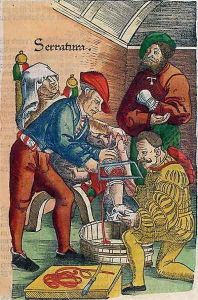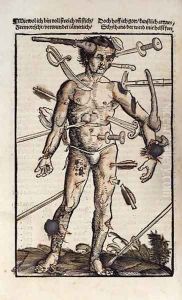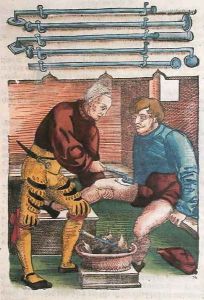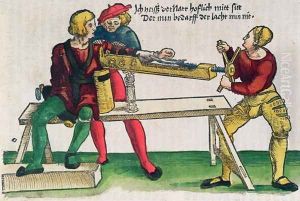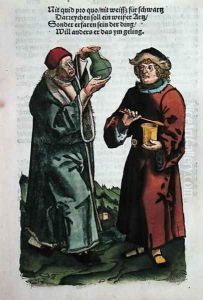Hans or Johannes Ulrich Wechtlin Paintings
Hans or Johannes Ulrich Wechtlin was a notable artist from the early 16th century, primarily active in Strasbourg, which was then part of the Holy Roman Empire. The exact details of Wechtlin's life, including his birth and death dates, are not precisely known, but scholars estimate that he was born around 1480 to 1485 and died around 1526. His work as an artist is characterized by its place within the Northern Renaissance, and he is best known for his woodcuts and engravings.
Wechtlin initially may have been trained in the workshop of the printmaker and draftsman Martin Schongauer in Colmar. After Schongauer's death in 1491, Wechtlin likely continued his training and professional development in the milieu of Strasbourg, which was a vibrant center for art and humanist scholarship at the time. His style was influenced by the works of Albrecht Dürer, as well as other contemporary artists such as Hans Baldung Grien, with whom he may have collaborated or at least been in contact.
Throughout his career, Wechtlin produced a variety of woodcuts, many of which were illustrations for books. This was a period when the printing press had begun to revolutionize the production and dissemination of literature and images, and Wechtlin's prints contributed to this burgeoning culture of printed media. He is also known for his standalone prints and series of allegorical or mythological subjects, which were typical of the Northern Renaissance's fascination with classical themes, reinterpreted in a contemporary context.
Wechtlin's works are characterized by their intricate detail and the dynamic interplay of light and shadow, a technique known as chiaroscuro, which he employed to great effect in his prints. Despite his clear talent and contribution to the art of the Northern Renaissance, Wechtlin's work was eventually overshadowed by the more famous Dürer and other artists of the era. Nevertheless, his prints remain an important part of the history of early printmaking in Europe, providing insight into the cultural and intellectual preoccupations of the time.
Very little is known about Wechtlin's personal life, and most of what is known about the artist comes from his surviving works and the few contemporary references to him in historical documents. His prints can be found in various museum collections and are studied by art historians interested in the development of printmaking in the Renaissance period.
